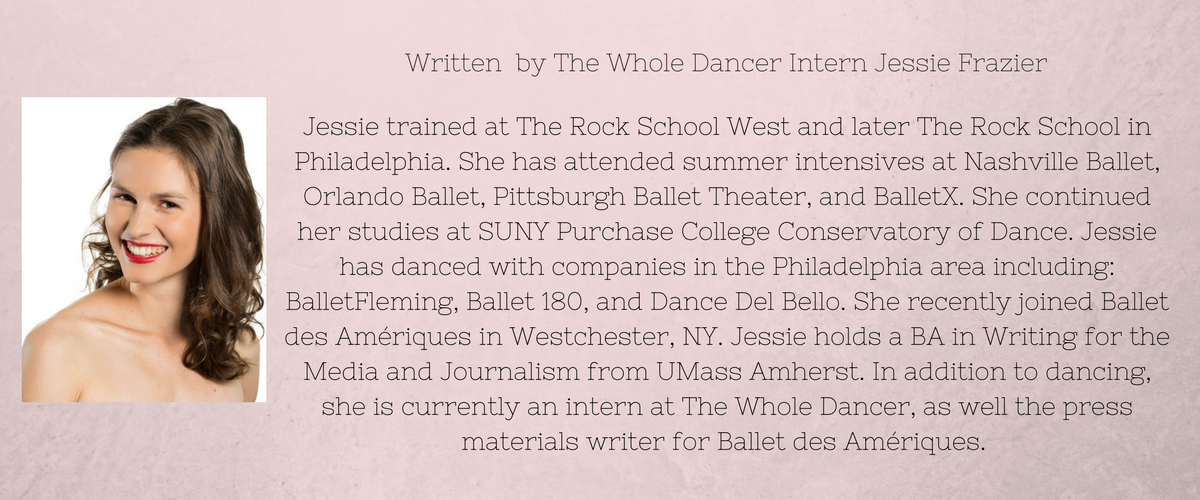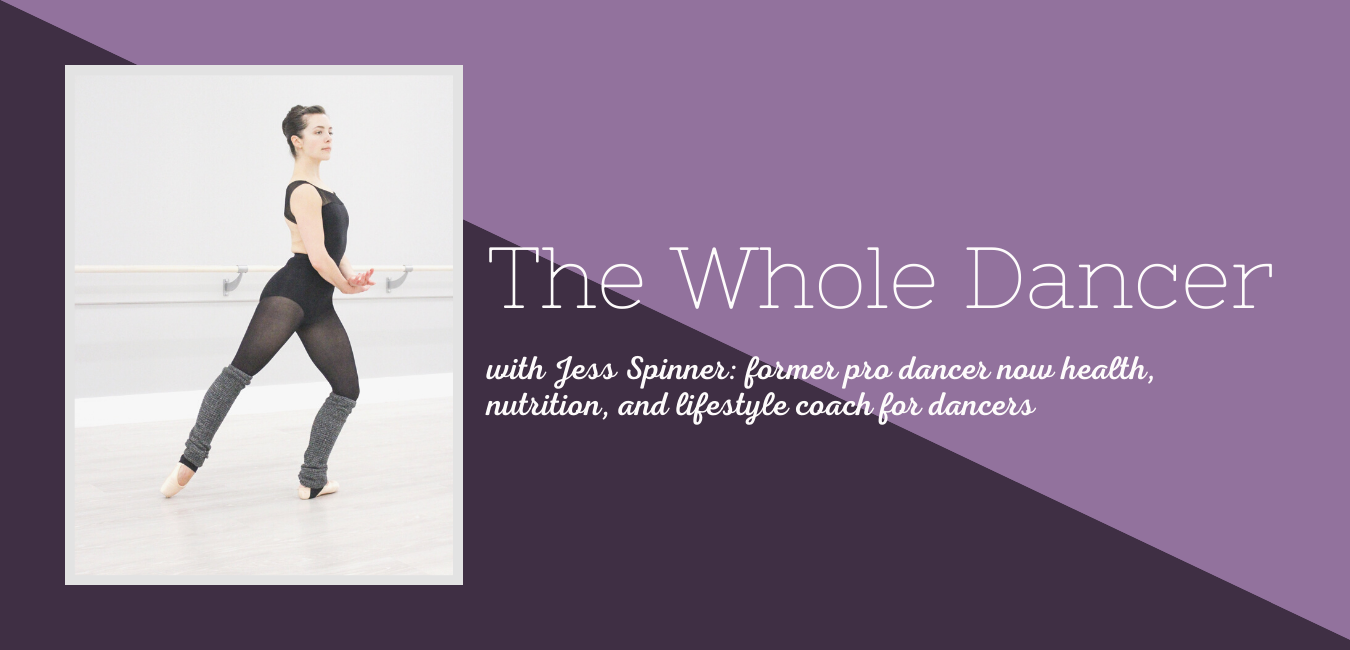Yes, we care about the health of your knees + ankles also!
“Send you knees over your toes in plie.”
“Hips stacked on top of your knees, stacked on top of your toes.”
“Don’t let your knees roll in.”
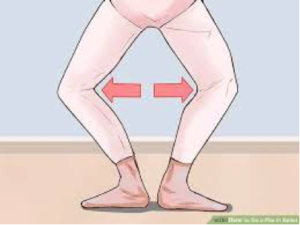 How often have you heard teachers say these phrases (or something similar) during class regarding lower leg alignment? All the time. Teachers spend so much time teaching their students the importance of proper alignment, not just for proper classical ballet technique, but to prevent injury.
How often have you heard teachers say these phrases (or something similar) during class regarding lower leg alignment? All the time. Teachers spend so much time teaching their students the importance of proper alignment, not just for proper classical ballet technique, but to prevent injury.
For classical ballet, or any dance for that matter, knees must track over the toes while in plie. Your feet cannot be more rotated that your knees.
“Weakness in the hip and lower abs show in the lower leg,” says Sarah Edery-Altas, DPT at the Harkness Center for Dance Injuries at NYU Langone Orthopedic Hospital in New York City. This weakness is found in dancers who force their turnout from their ankles instead of the initiating turnout from the rotator muscles (Gluteus Medius and Gluteus Maximus) in the hip.
Since this is common issue in the ballet world, I talked to Edery-Altas to ask her how she helps dancers rehab from lower leg injuries and how to improve leg alignment.
Of the patients that Edery-Altas sees at the Harkness Center, a majority of the injuries she sees are the lower extremities. Of the majority, half of them are knee and ankle issues. Many of the chronic injuries she sees are from improper alignment.
“Many dancers have difficulty with 20-25 repetitions of releve on a single leg, which is an objective measure that is expected in order for a dancer to return in full to dance,” says Edery-Altas. “In addition to those weaker stability and rotational muscles (gluteus maximus and medius, deep external rotators, posterior tibialis, and foot intrinsics) many times the planarflexors tend to lack the strength required for the load many dancers are asking of themselves.”
When Edery-Altas starts working with new patients, often she starts with hip exercises. “The hip controls the foot and the foot informs the hip what is happening.”
She likes to start with a Sarhmann Progression exercise that she calls: hip drop and recover with ball on wall.
- Start perpendicular to the wall with the exercise ball pressing into the hip closest to the wall. The leg closest to the wall is extended in front, just off the floor.
- Drop the hip closest to the wall down as far as you can go.
- Pressing into the floor with the standing foot and lengthening the trunk of your body, relevel pelvis back to the original position.
- Do three sets of 10.
- As you advance, you may add releve to the exercise.
This exercise reteaches dancers how to use the tripod of the foot: putting equal pressure on the medial (towards the midline) and lateral (away from the midline or on the outer side of the body) sides of the ball of the foot and the heel. Putting equal pressure on the tripod of the foot prevents from rolling in.
(towards the midline) and lateral (away from the midline or on the outer side of the body) sides of the ball of the foot and the heel. Putting equal pressure on the tripod of the foot prevents from rolling in.
“You can see through bunions that the foot takes so much force and shows the weakness of the foot. [You can see] Where the load is going with [while wearing] pointe shoes or LaDucas,” say Edery-Altas.
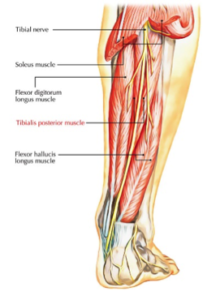 Sarah also has patients work on foot doming to make sure foot alignment is correct. “When you cheat your turnout from the feet, you pronate or roll in to maintain an arch. Foot doming teaches dancers to use the short toe flexors tendons instead of overusing the long toe flexors such as the FHL [Flexor Halitus Longus, the tendon that controls the flexion of the big toe.].”
Sarah also has patients work on foot doming to make sure foot alignment is correct. “When you cheat your turnout from the feet, you pronate or roll in to maintain an arch. Foot doming teaches dancers to use the short toe flexors tendons instead of overusing the long toe flexors such as the FHL [Flexor Halitus Longus, the tendon that controls the flexion of the big toe.].”
To strengthen your legs for better knee and ankle alignment, Edery-Altas gives deep external rotator exercises using turnout disks.
- Stand on the disks (one foot on each disk) in parallel
- Initiating from the hips, rotate your legs to first position
- Return to parallel
Repeat with variations of plie:
- staying in the plie the entire time
- plie in parallel, turnout, straighten legs, plie, return to parallel
- Once you’ve become strong enough, you can do all these exercises with one leg.
If you do not have access to turnout disks, you can do the exercises lying on your back with your feet in the air.
Clamshells are another exercise given to strengthen the rotator muscles. Edery-Altas has patients focus 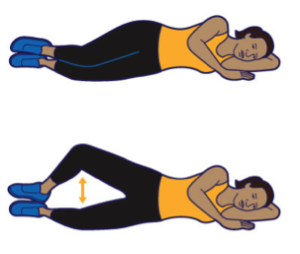 on keeping the heels together during the exercise. The exercises can be done with the legs at different lengths- one set with a longer knee bend and one set with a shorter knee bend. This allows you to work different muscles in the glutes.
on keeping the heels together during the exercise. The exercises can be done with the legs at different lengths- one set with a longer knee bend and one set with a shorter knee bend. This allows you to work different muscles in the glutes.
Sarah includes squats in the progression of improving lower leg alignment and increasing strength as the patient advances. She likes to give squats because they directly correlate to jumping class or rehearsal. Single leg squats translate into single leg jumps in petite and grand allegro. “You want to relax the foot in plie to absorb force and then dome the foot to push off [in a jump or squat].”
The big thing Edery-Altas stresses when either recovering from an injury or building strength: “Focus on progressing slowly and smartly.” Later adding, “Focus on working on your deep limitations instead of practicing something you’re already good at.”
About Sarah Edery-Altas
Dr. Edery-Altas received a bachelor’s degree in neuroscience and a doctorate in physical therapy from Columbia University. She is a former professional ballet dancer, who danced as a member of both the Pennsylvania Ballet and the Boston Ballet.
